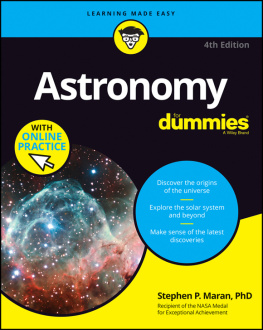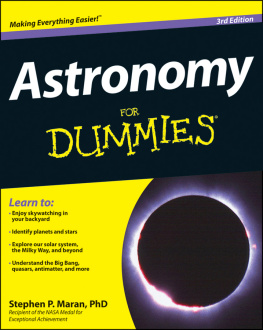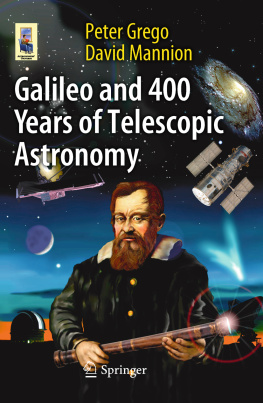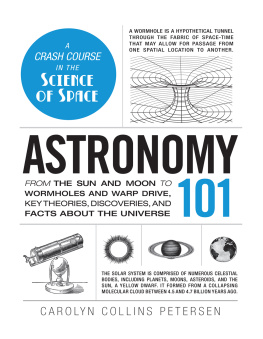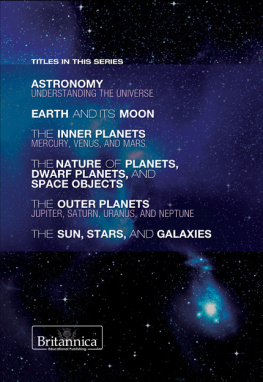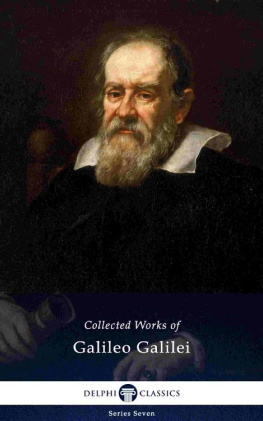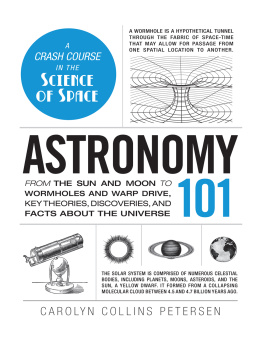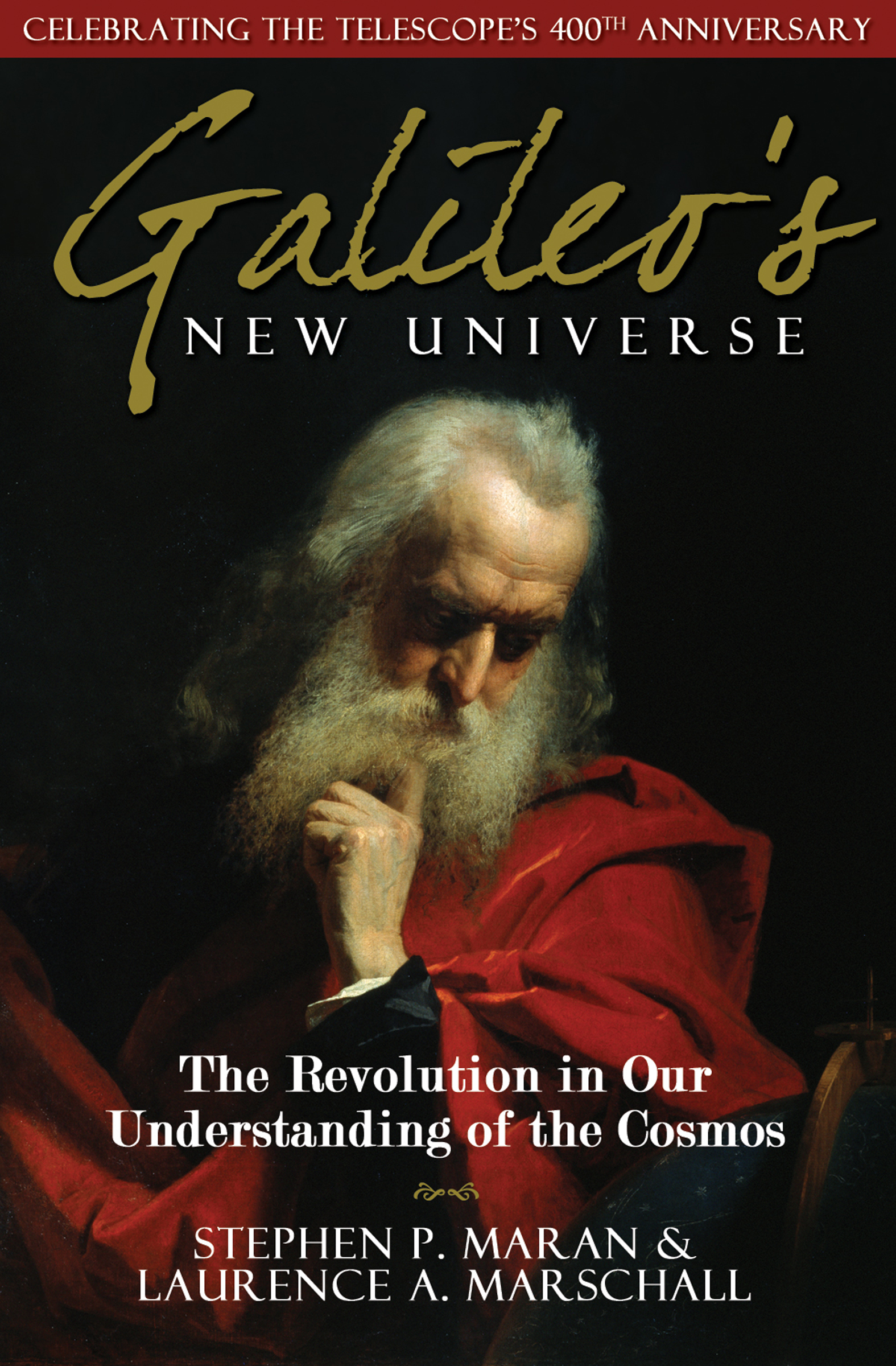Copyright 2009 by Stephen P. Maran and Laurence A. Marschall
All rights reserved. No part of this book may be used or reproduced in any manner whatsoever without written permission except in the case of brief quotations embodied in critical articles or reviews.

BenBella Books, Inc.
6440 N. Central Expressway, Suite 503
Dallas, TX 75206
Send feedback to feedback@benbellabooks.com
www.benbellabooks.com
Printed in the United States of America
10 9 8 7 6 5 4 3 2 1
Library of Congress Cataloging-in-Publication Data
Maran, Stephen P.
Galileos new universe : the revolution in our understanding of the cosmos /
Stephen P. Maran and Laurence A. Marschall.
p. cm.
ISBN 978-1-933771-59-5
1. AstronomyHistory. 2. AstronomyHistory--17th century. 3. Galilei, Galileo, 1564-1642. 4. Discoveries in science. I. Marschall, Laurence A. II. Title.
QB28.M37 2008
520.9032dc22
2008045907
Proofreading by Stacia Seaman
Cover design by Laura Watkins
Text design and composition by PerfecType, Nashville, TN
Printed by Bang Printing
Distributed by Perseus Distribution
perseusdistribution.com
To place orders through Perseus Distribution:
Tel: (800) 343-4499
Fax: (800) 351-5073
E-mail:
Significant discounts for bulk sales are available. Please contact Robyn White at robyn@benbellabooks.com or (214) 750-3600.
Galileos New Universe
The Revolution in Our Understanding of the Cosmos
Stephen P. Maran and Laurence A. Marschall

Table of Contents
Acknowledgments
Stephen P. Maran: I am indebted to Prof. John C. Brandt and Dr. Michael J. Mumma for helpful advice and suggestions on observations and physics of comets. I thank my wife, Sally Scott Maran, and our children Michael, Enid, and Elissa for their love and support.
Laurence A. Marschall: Thanks to Owen Gingerich and Donald Goldsmith for much good advice and many good conversations. To Albert Van Helden for sending a copy of his seminal 1977 paper on the invention of the telescope. To all the faculty and staff in the Gettysburg College Physics Department who have supported me over the years. And most of all to my Ellen, Emma, and Geoff, who have been encouraging me to keep on writing.
The authors are especially grateful to their agent, Skip Barker, and to BenBellas Publisher, Glenn Yeffeth, for their encouragement and enabling roles in bringing this project to fruition. We also thank the dedicated staff at BenBella Books for their work in editing, design, and production.
Introduction
No one is certain who built the first telescope, but we do know who first used it to systematically study the heavens. Sometime around the beginning of the 1600s, reports of a magical tube that had the power to bring distant objects closer began to circulate throughout Europe. Galileo Galilei, a professor of mathematics at the University of Padua, caught word of this curious device during the summer of 1609 and immediately knew he had to have one. Details of its construction were not clear, but Galileo was able to figure out a way to make an instrument that did just what the reports claimed. First I prepared a tube of lead, at the ends of which I fitted two glass lenses, both plane on one side while on the other side one was spherically convex and the other concave. Looking through the tube, Galileo satisfied himself that distant objects really did seem larger and more distinct. Finally, sparing neither labor nor expense, I succeeded in constructing for myself so excellent an instrument that objects seen by means of it appeared nearly one thousand times larger and over thirty times closer than when regarded with our natural vision.
In the fall of 1609, Galileo turned his new perspicillum skywardthe word telescope was not yet in common use, and Galileos name for it simply denoted a spyglass or seeing deviceand what we knew about the Universe changed overnight. For instance, the Moon, which scholars at the time believed was smooth, uniform, and perfectly spherical, surprisingly revealed a surface that was uneven, rough, and full of cavities and prominences, being not unlike the face of the earth, relieved by chains of mountains and deep valleys. The Milky Way, thought to be an unbroken cloud of light, resolved itself into a myriad of stars in the farseeing glass. Galileos consciousness was jolted by the realization that the Moon and the Earth were two of many worlds in a vast cosmos.
Four hundred years after Galileo, telescopes hundreds of times the diameter of Galileos crude perspicillum probe the depths of an expanding Universe each night, while spacecraft send back digital images of the heavens seen in infrared and X-rays, types of radiation Galileo never dreamed of. The surface of the Moon now bears the footprints of American astronauts, and lunar geology is a well-developed science. The revolution in understanding the cosmos that started with Galileo has resulted in an ever-accelerating series of discoveries.
To commemorate the 400th anniversary of Galileos momentous observations, the International Astronomical Union, a global association of research astronomers, declared 2009 the International Year of Astronomy, to mark the monumental leap forward that followed Galileos first use of the telescope for astronomical observations, and portray astronomy as a peaceful global scientific endeavour that unites astronomers in an international, multicultural family of scientists working together to find answers to some of the
mark the monumental leap forward that followed Galileos first use of the telescope for astronomical observations, and portray astronomy as a peaceful global scientific endeavour that unites astronomers in an international, multicultural family of scientists working together to find answers to some of the most fundamental questions that humankind has ever asked.
As members of this community of astronomers, we welcome this opportunity to open our family album and examine how Galileos first indistinct glimpses into space compare with the unbounded cosmos that we study today. Rather than compiling an exhaustive history of the past four centurieswhich could easily run into multiple volumeswe have chosen to jump back and forth between the perspective of Galileos seventeenth-century natural philosophy and the perspective of our twenty-first-century astrophysics so that readers can appreciate better both the profound novelty of the first steps Galileo took and the great distance we have traveled since then. We want to demonstrate the genius of Galileo and, at the same time, highlight the dazzling changes that have resulted from 400 years of progress in astronomy.
Accordingly, each chapter in this book has two parts: first a description of what Galileo and his contemporaries knew (or thought they knew) about a particular celestial objectlike Jupiter or the Moonfollowed by a review of current astronomical knowledge on the same subject.
It has been said that the more things change, the more they stay the same. That may be true in some realms of human endeavor, but itis seldom true for science. Healthy science is always finding answers to old problems while continuously moving forward along new lines of inquiry. Though some of the questions Galileo faced still puzzle us today, the overall path of scientific development in the past four centuries has been to fill in gaps in knowledge and push our vision outward to the edges of the Universe.


